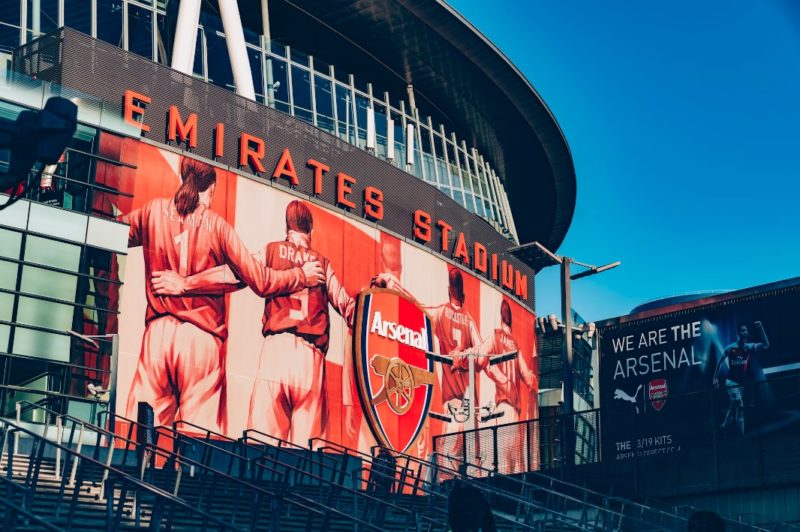The evolution of Arsenal’s playing style is a story of innovation, ideology, and adaptation—a reflection of football’s shifting landscapes and the club’s pursuit of excellence. Few teams in modern football possess such a well-defined identity, yet Arsenal’s aesthetic has never been static. It is, instead, a fluid continuum shaped by tactical trends, managerial philosophies, and the demands of the game itself.
At the heart of Arsenal’s transformation lies Herbert Chapman, whose tenure in the 1920s and 1930s laid the groundwork for what the club could become. Chapman’s introduction of the WM formation was revolutionary, not only redefining Arsenal’s approach but altering English football’s tactical language. The focus on shape and positional discipline brought success, creating a platform for the measured pragmatism that would characterise much of the club’s pre-Wenger years.
The late 20th century saw George Graham enforce an identity built on defensive steel. “1-0 to the Arsenal” became both a chant and an ethos, as Graham’s back four—composed of Tony Adams, Steve Bould, Nigel Winterburn, and Lee Dixon—defined a resolute style in which defensive organisation was sacrosanct. Matches were often tight, calculated affairs, emblematic of a functionalism where results mattered more than aesthetics.
Then came Arsène Wenger, whose arrival in 1996 ushered in a stylistic renaissance. If Graham’s Arsenal was stoic and workmanlike, Wenger’s side became synonymous with artistry and fluidity. Influenced by his time in France and Japan, Wenger redefined the club’s ethos with an emphasis on possession, ball movement, and technical excellence. His use of a 4-4-2—progressing to more sophisticated variants like the 4-2-3-1—allowed Arsenal to evolve into one of the most aesthetically pleasing teams in Europe.
The “Invincibles” season of 2003-04 encapsulated Wenger’s philosophy in its purest form. Arsenal’s play blended technical mastery with ruthless efficiency. Patrick Vieira dictated tempo in midfield while Thierry Henry, Dennis Bergkamp, and Robert Pirès embodied elegance and innovation in attack. Arsenal became synonymous with dominance and beauty, a team whose style resonated beyond North London, shaping global perceptions of how the game could be played.
However, the post-Highbury era saw the need for adaptation. Financial limitations dictated by the Emirates Stadium project forced Wenger to pivot, relying more on emerging talent and less on proven veterans. Arsenal’s style remained attractive, but fragility began to emerge—a sense of aesthetic purity compromised by defensive frailty and inconsistency. The pursuit of idealism often clashed with the ruthless pragmatism required to win titles in an era increasingly dominated by wealthier, deeper squads.
Wenger’s eventual departure marked a turning point. Under Unai Emery, Arsenal grappled with an identity crisis, struggling to balance attacking ambition with defensive solidity. Mikel Arteta’s appointment in 2019 heralded a recalibration. Arteta, steeped in the philosophy of Pep Guardiola, initially focused on compactness, structure, and control—prioritising defensive organisation reminiscent of Graham’s era while maintaining Wengerian principles of positional play. Arteta’s Arsenal emerged as a hybrid, blending pragmatism with expressive football, shaped by the tactical versatility required of the modern game.
The transformation under Arteta has been gradual yet profound. Arsenal’s pressing game has become more coordinated, their positional rotations more sophisticated. Players like Martin Ødegaard and Bukayo Saka personify a return to the creativity of Wenger’s finest sides, while Gabriel and Declan Rice offer a physical and tactical spine that provides the balance often absent in Wenger’s later years. The reintroduction of patterns akin to Guardiola’s positional play—vertical passing lanes, third-man runs, and overloads in wide areas—has given Arsenal a modern edge.
In many ways, the current evolution reflects football’s own commercial transformation. As the club adapts to financial pressures and modern revenue streams—where even sponsorship partnerships with an online mobile casino no deposit bonus play a role—Arsenal’s ability to innovate on the pitch remains vital. The globalisation of the game has made tactical homogeneity more common, yet Arsenal’s evolution is rooted in its refusal to abandon identity for transient trends.
Arsenal’s playing style remains a testament to the club’s capacity for reinvention. From Chapman’s innovations to Wenger’s vision and Arteta’s rebuilding, Arsenal has remained a beacon of football’s balance between pragmatism and artistry. Styles may evolve, but the pursuit of excellence persists, as Arsenal continues to redefine what it means to be both beautiful and effective.
